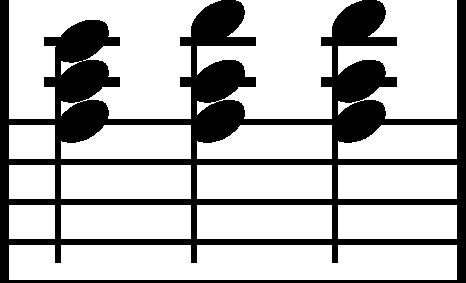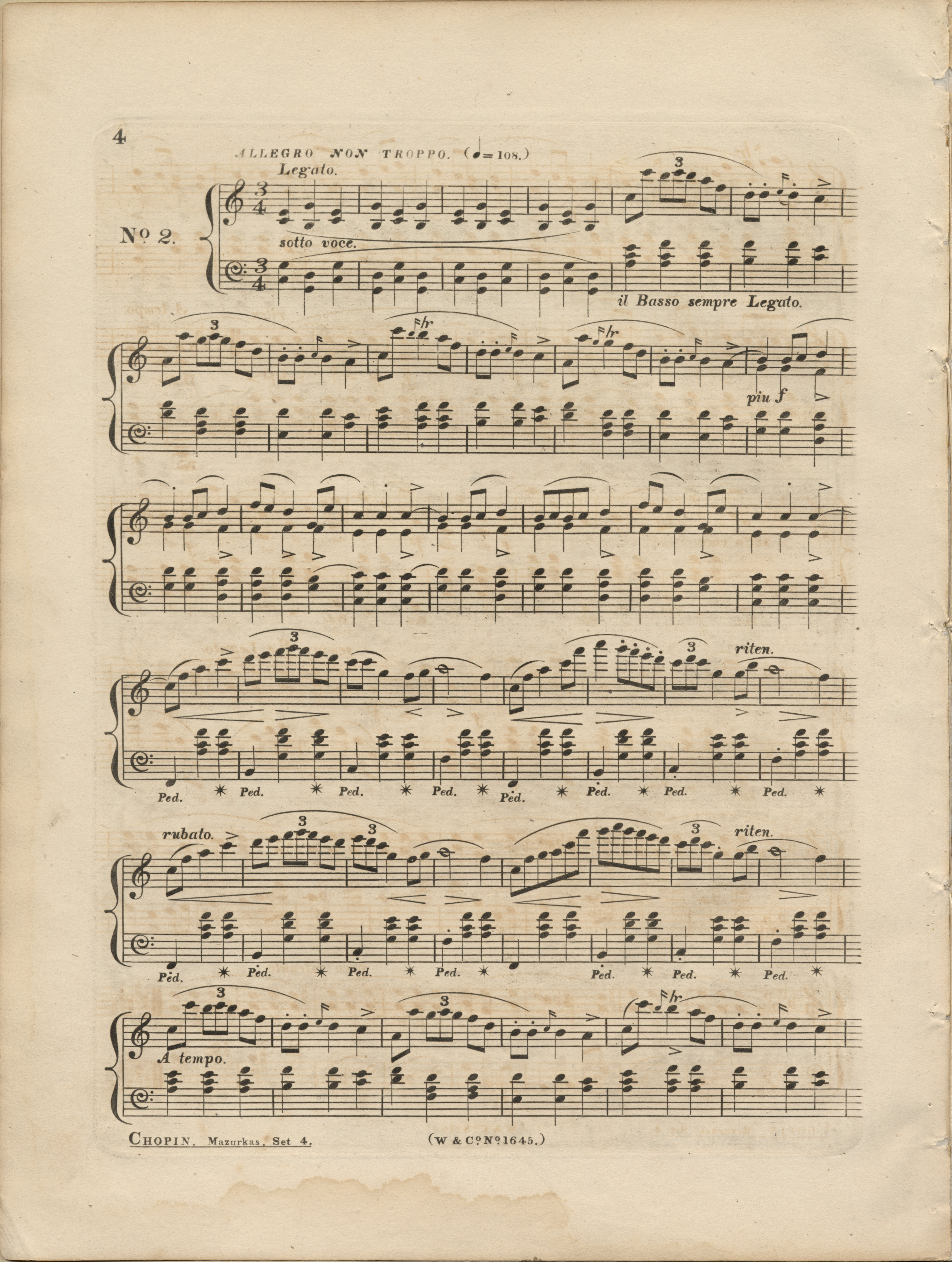



The four-bar phrase opening the main theme of the Mazurka appears three times throughout the whole work (starting from bars 5, 37 and 89), always with its minimally changed repetition (from bars 9, 41 and 93). The accompaniment of its first bar was changed by Chopin at least twice. The composer hesitated between e1 and f1 as the top note for the first chord in bar 5 and the 2nd chord in bar 89. Here are the three source-confirmed versions of bars 5, 37 and 89:
The initial version of A:  ,
,
The altered version of A:  ,
,
The altered version of FE:  .
.
If we take into account the accompaniment for the direct repetitions of that phrase, having three times unmistakably  , it will transpire that as a result of the introduced changes the versions of five out of the six discussed bars have been made uniform. In such a situation one may wonder whether leaving bar 37 unchanged was not due to Chopin's oversight during proofing and whether his ultimate aim was to make all those places fully consistent (cf. Mazurka in G minor no. 1, bars 26-27). However, there are also some stylistic arguments against that hypothesis: bar 37 is the only one that follows the bar based on the F major chord, therefore using that chord as soon as the 2nd beat of bar 37 practically ruins the effect of the change of harmonic colour upon the appearance of the theme.
, it will transpire that as a result of the introduced changes the versions of five out of the six discussed bars have been made uniform. In such a situation one may wonder whether leaving bar 37 unchanged was not due to Chopin's oversight during proofing and whether his ultimate aim was to make all those places fully consistent (cf. Mazurka in G minor no. 1, bars 26-27). However, there are also some stylistic arguments against that hypothesis: bar 37 is the only one that follows the bar based on the F major chord, therefore using that chord as soon as the 2nd beat of bar 37 practically ruins the effect of the change of harmonic colour upon the appearance of the theme.
Chopin was also working to refine the accompaniment of the Mazurka in other places as well, cf. e.g. bars 7 and analog. or bar 57.
Compare the passage in the sources »
category imprint: Differences between sources; Corrections & alterations
issues: Accompaniment changes, Authentic corrections of FE
notation: Pitch



